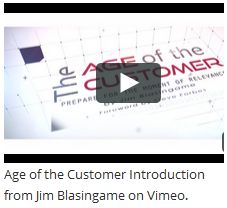In his book, Paradigms: The Business of Discovering the Future, futurist Joel Barker explains that paradigms are filters through which humans view the world and around which we pursue our lives.

Things that align with our paradigms sail right through; otherwise they meet resistance. A favorite color, for example, is a paradigm.
We also establish marketplace paradigms. Perhaps the most interesting paradigm dynamic is between a customer and a business, because a customer’s product paradigm logically becomes a business’s production paradigm.
Product paradigms always work for customers because they can pick and choose at will. But for a business, a production paradigm comes with significant risks, because they can be left with an investment – physically, financially and emotionally – in a newly unviable production paradigm.
When there is a paradigm disruption – like customers changing preferences – that’s called a shift. Barker says when a paradigm shifts, everything goes back to zero; what once worked so well becomes unavailable or obsolete.
When a shift occurs – the ability to buy stocks online, for example – customers easily transition to the new thing that likely caused the shift. But for a business with multi-faceted investments in the old paradigm – only stockbrokers can place stock orders – such a shift can be expensive and dangerously disruptive.
In the past I’ve introduced you to several examples of how the marketplace is transitioning from The Age of the Seller to The Age of the Customer™. This transformation is creating a number of shifts which are at once exciting for some and disruptive for others.
In the new Age, there are three primary shifts a business must now monitor constantly; each associated with a key element of customer relationships.
 The Buying Decision
The Buying Decision
Customers have always controlled the buying decision element, but they now need less decision-making help from a business. The paradigm shift question: “How do we prevent our marketing and sales strategy from becoming obsolete?”
The Information
Previously controlled by businesses, access to information is now almost completely controlled by the customer. The paradigm shift question: “How do we maintain a relevant value proposition?”
The Product
Once controlled by the business, customers increasingly influence product development. The paradigm shift question: “How do we love what we do without loving how we do it?”
Discover the future by monitoring customer paradigms.




